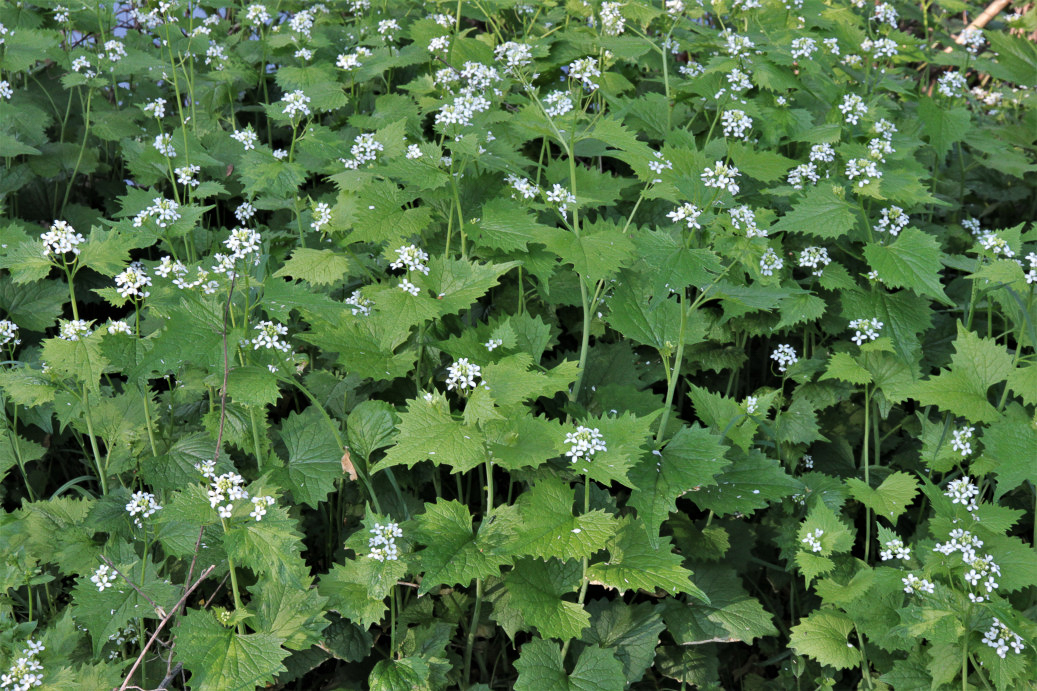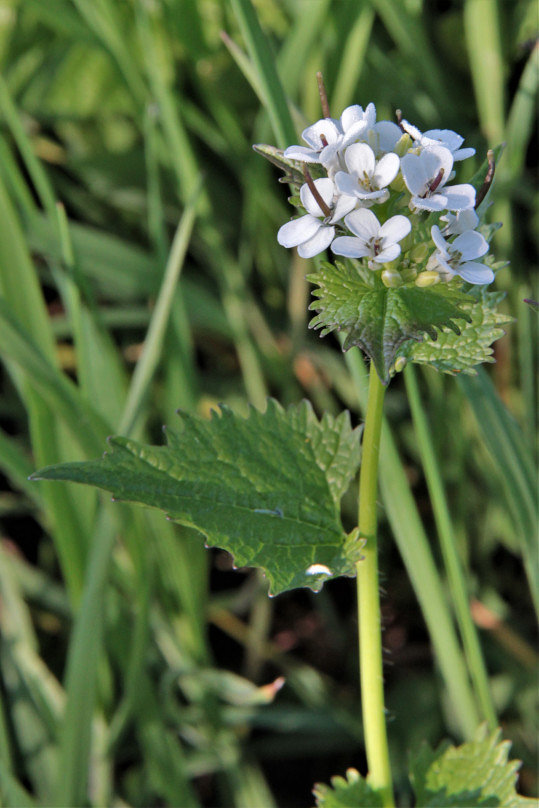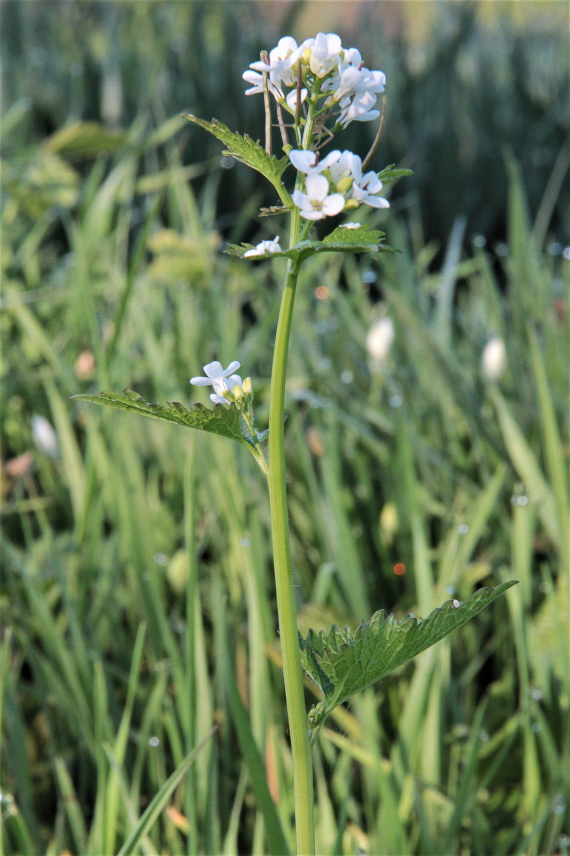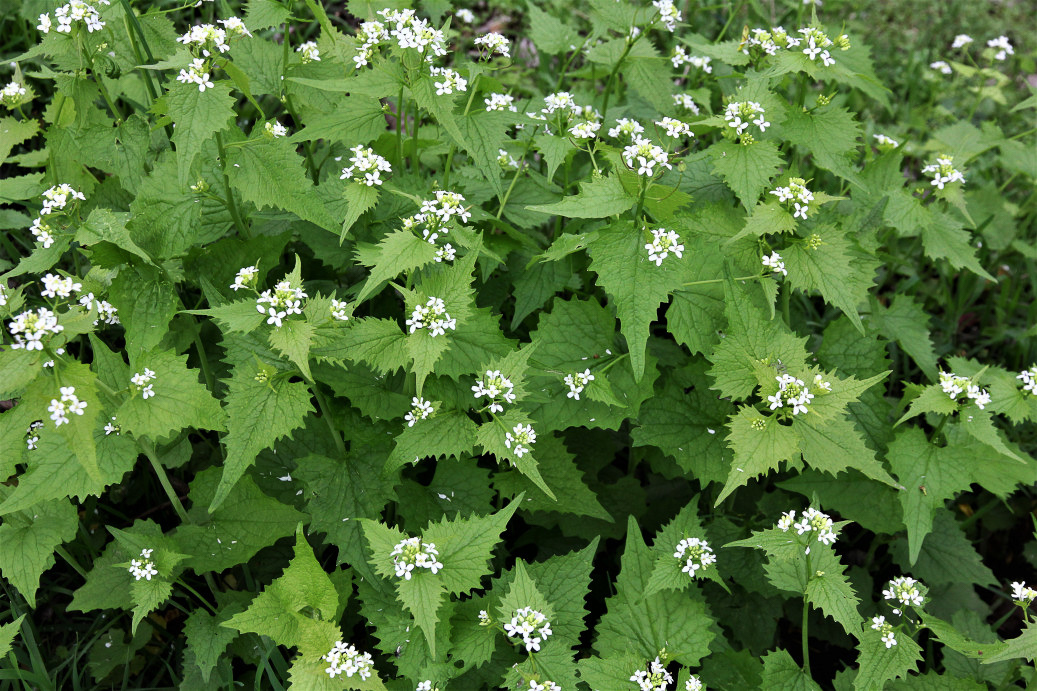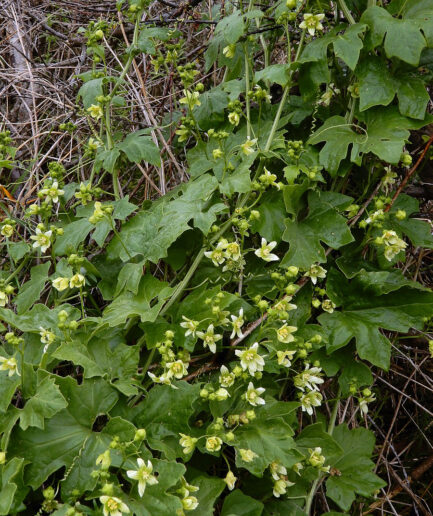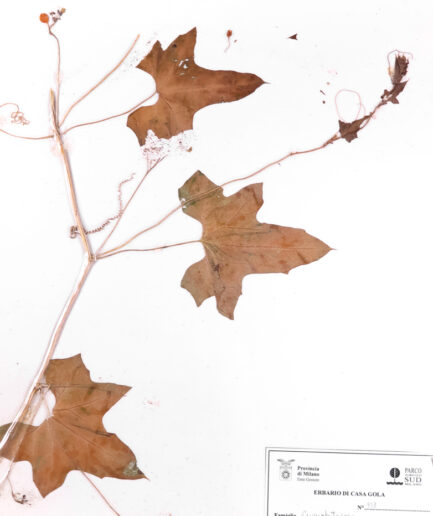Garlic Mustard
Scientific Name: Alliaria petiolata (M.Bieb.) Cavara & Grande
Family: Brassicaceae
MORPHOLOGY
Growth habit and size: Biennial herbaceous plant, 30-80 cm tall.
Stem: Erect stem, simple or branched only at the top, stiff, cylindrical, glaucous, and slightly pubescent only at the base.
Leaves: Alternate, wrinkled, entire leaves. The lower leaves (8x7cm), which fall at the time of flowering, are cordate-reniform, with crenate edges and a long petiole. The upper leaves are rhombic in shape and have shorter petioles, ending in a point and have serrated edges. All leaves are glabrous on the upper surface, with few scattered hairs on the lower surface, and emit a strong garlic odor when crushed.
Flowers: Fragrant and hermaphroditic flowers, grouped in terminal racemes, composed of 4 greenish sepals and 4 white petals 5-6 mm long, 6 stamens, and a very short stylum. They are pollinated by butterflies and bees.
Fruits and seeds: The fruits are tetragonal siliques 5-6 cm long, containing small gray seeds.
DISTRIBUTION AND HABITAT
It grows in moist and shady clearings, fertilized soils, near houses, in woods, and hedges, from sea level up to 1,700 m altitude. Common throughout Italy except in Sardinia.
USE
This plant is anti-asthmatic, antiscorbutic, anti-sneeze, diaphoretic, antiseptic, vermifuge, vulnerary, and expectorant. Poultices made with its leaves are vulnerary and soothe itching. In cooking, due to their aroma, the fresh leaves and flowers are used as a substitute for garlic. They are more digestible, and are added to salads, soups, fillings, and in all culinary preparations. In Great Britain, they are used to flavor sandwiches. The seeds, which contain an essential oil similar to mustard oil, are used to flavor foods and appetizers due to their appetite-stimulating properties. Before taking any plant-based product (medicinal or non-medicinal) for therapeutic or similar purposes, it is always advisable to consult a doctor.
Photo: Kindly provided by Claudio Farinati


